Mary
Kokorda
Image
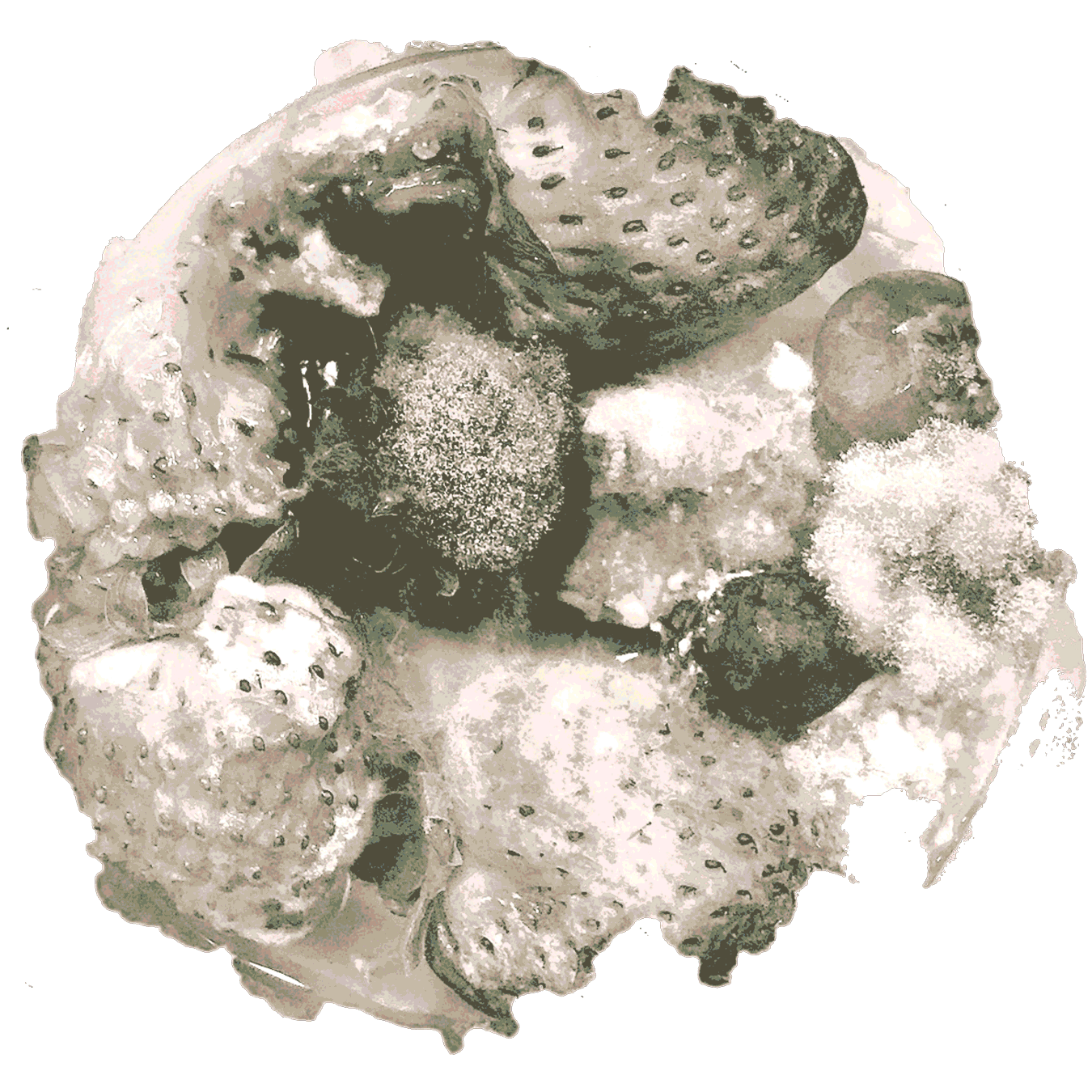
Image
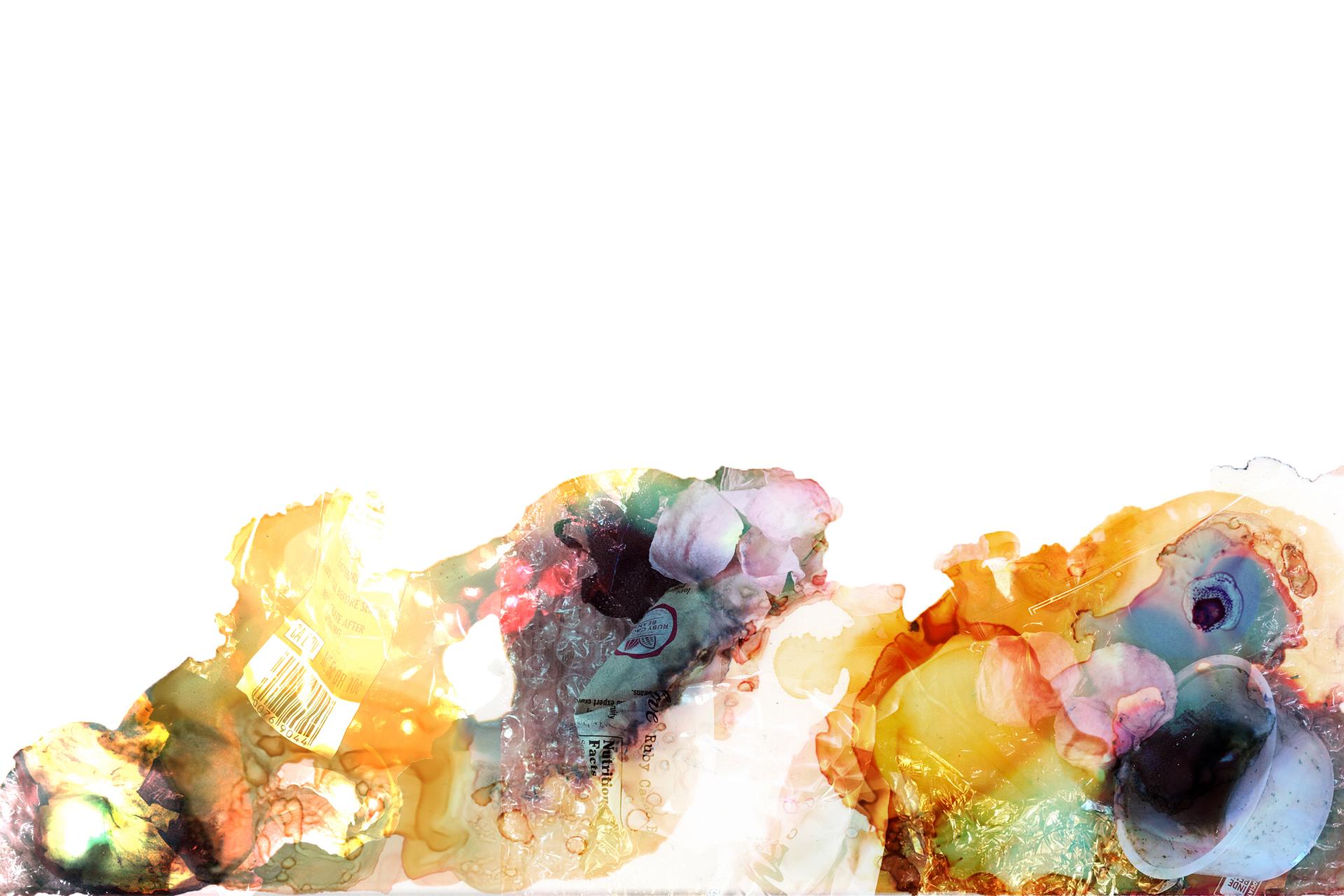
Territories
of Trash
Territories Of Trash
Designing the Overlap of Spaces
of Disposal and Acquisition
Where should we put our trash?
Our current system keeps potentially valuable material designated as trash hidden away at the margins and edges of our built environment, and shuttles garbage vast distances into landfills, where it persists indefinitely.
Over the past year I’ve invested time into learning about our country’s history of disposal in the landscape. Historically, changes in volume, types of waste, and cultural attitudes have prompted changes to typologies of disposal in our built environment.
Currently, due to changes in Chinese recycling policy in 2018, China no longer accepts America’s highly contaminated recycled material. Americans are also caught in the midst of a massive adjustment in our consumption and disposal habits due to the ongoing COVID-19 Pandemic.
I argue that we are currently at the precipice of another change, and it is our imperative as landscape architects to aid in the design of spaces of disposal which are socially and ecologically responsive community resources, and can recycle underutilized land as well as material.
This can be achieved by bringing spaces of disposal out of the hidden margins of our landscape, and overlap them with spaces of acquisition to better facilitate reuse, as well as reveal the inextricable and palpable connection between consumption and trash.
Image
Framing Concept 1: Change our vocabulary, Trash-Matter
That conversation about solutions begins by redefining our vocabulary. One key framing concept driving my work is a shift toward viewing “Trash” as a resource—and by granting it a new label that acknowledges inherent value. Trash is worthless, but Matter Matters.
Framing Concept 2: Overlap - The Base of a Tree
Another framing concept informing my work is overlapping spaces of acquisition and disposal. In our current system, spaces of disposal are defined by edges and boundaries that keep them and the materials within them marginalized from society. I propose a solution that overlaps spaces of consumption and disposal, metaphorically and functionally like the base of tree. For functional reasons, The space where the tree drops leaf litter overlaps where the roots acquire nutrients.
Image
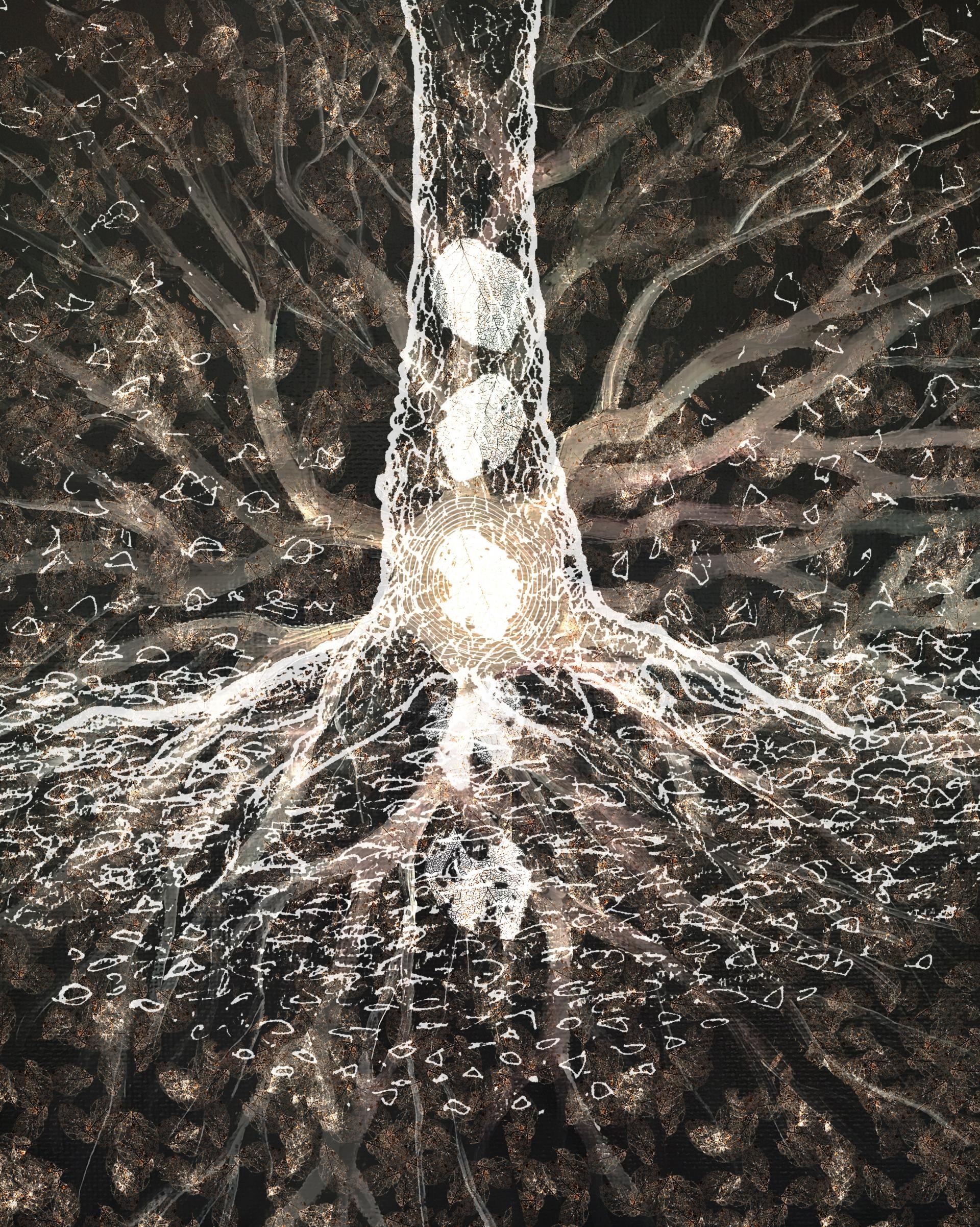
Image
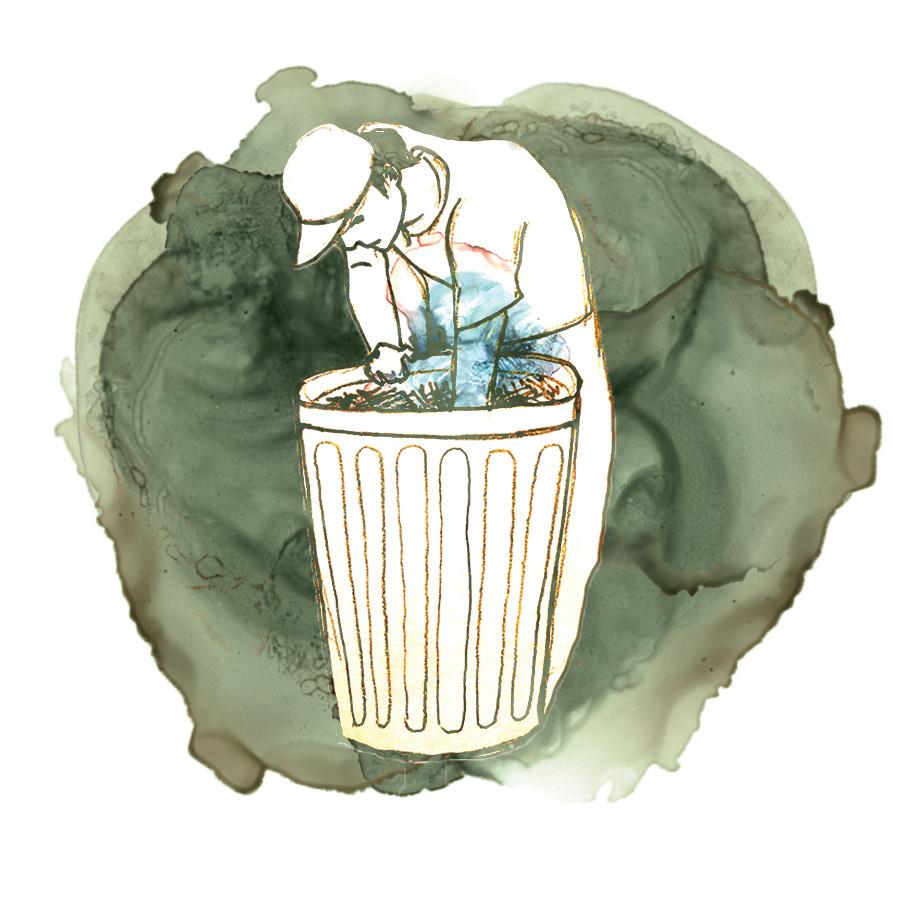
Framing Concept 3: Increase Visibility - De-Stigmatize
Re-use should not be seen an act of desperation, charity, or social subversion. Spaces of disposal should be designed so that reuse of disposed matter is viewed as a socially accepted act of ingenuity, resourcefulness, and conventional daily practice. Keeping disposal in full view can better facilitate intervention and prevent our continued ambivalence.
Image
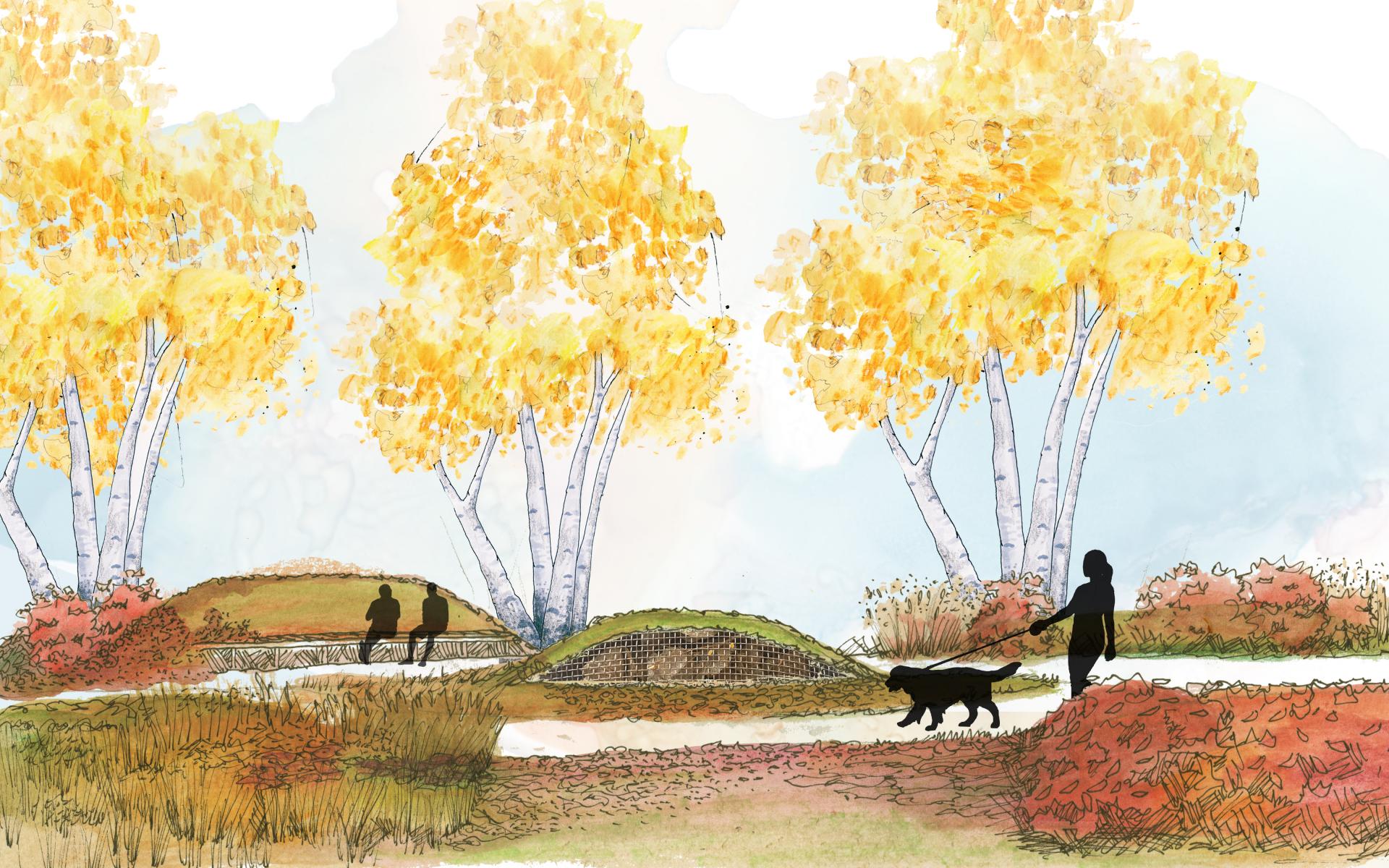
Salvage Garden
The Salvage Garden is the park area between the retail and resource recovery operations. It is comprised of a series of mounds which are formally reminiscent of not only landfills - but also echo the formal language of the compost windrows on the other side of the site. The mounds weave and stagger to create vantage points and wandering paths for discovering the parks sculptural repurposed elements and providing sight lines from recreational spaces into spaces of disposal. Mounds and gabion structures are filled with yard waste from nearby neighborhoods and torn up asphalt from the original site parking lots.
Image
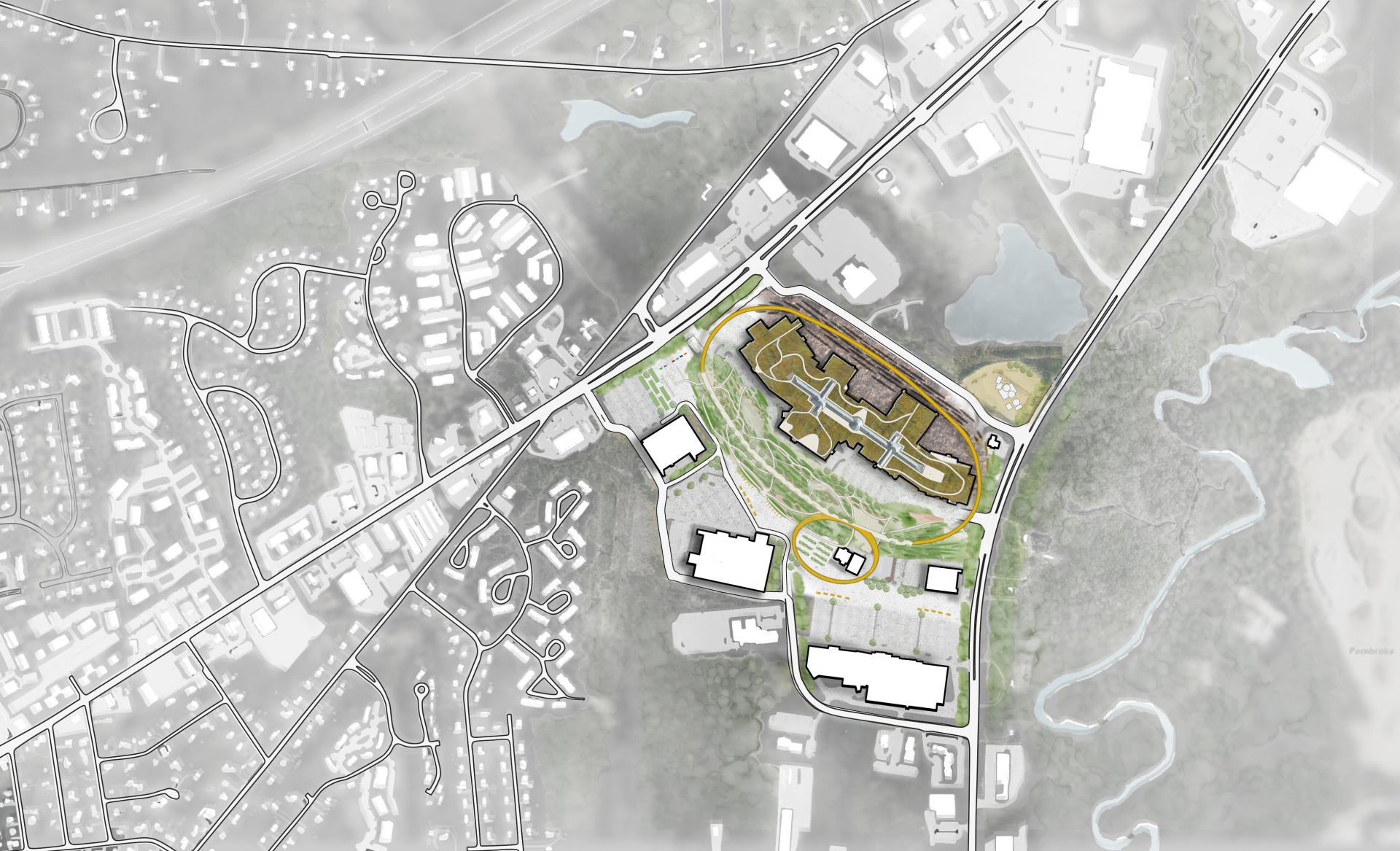
Site Plan: Concord’s New Recycling Park
Just down the street from where I live in concord, NH is a mostly defunct shopping mall bordered by relatively active big box retail stores. My design proposal involves turning the mall into a material recovery facility, and the surrounding parking lot into a composting operation and recycling park.
This design will manifest by curating a selection of blended space typologies, inspired by real world case studies and unified on site by an infinity loop formal structure that guides user experience and provides moments of collection, circulation, and revelation as an immersive spectacle. The end result will be a revitalized retail park that simultaneously functions as a highly social, human-scale material recovery facility and community material hub.
Image
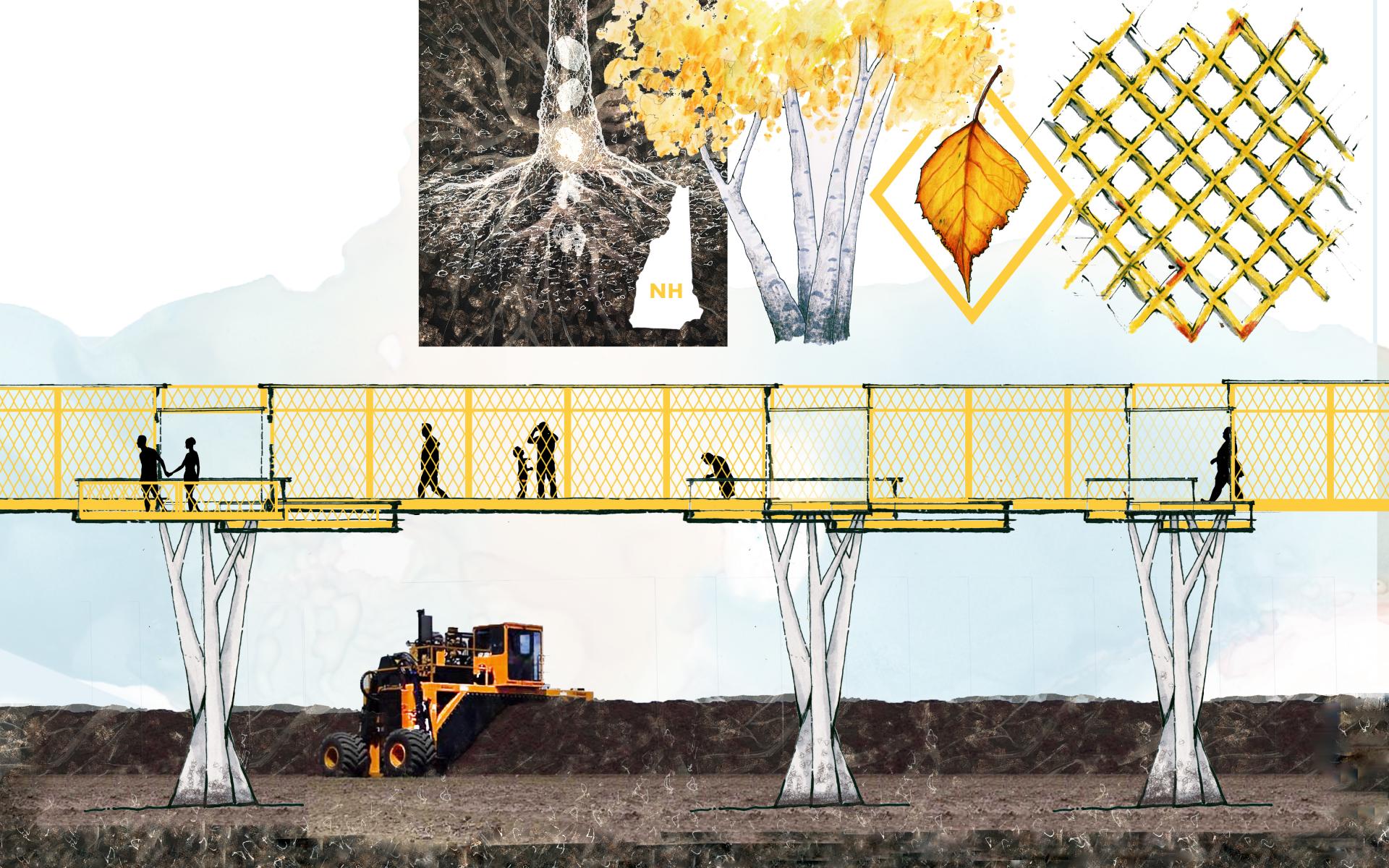
New Hampshire’s Impending Waste Crisis
New Hampshire accepted more trash into its landfills last year than any other north-eastern American state, more than twice as much as some of its immediate neighbors. Reading through New Hampshires biannual solid waste reports, I learned that more than 50% of the waste landfilled in New Hampshire comes from out of state. Waste is imported from more populated states like Connecticut, Massachusetts, and Rhode Island into New Hampshire, where several major landfills are privately owned and have fewer restrictions and lower fees than the landfills in southern New England. I also learned that due to the influx of material from out of state, reduced options for recycling, and understandable opposition to siting new landfills or expanding existing ones, that new Hampshire’s waste will exceed its landfill capacity in the next 5 years.
Image
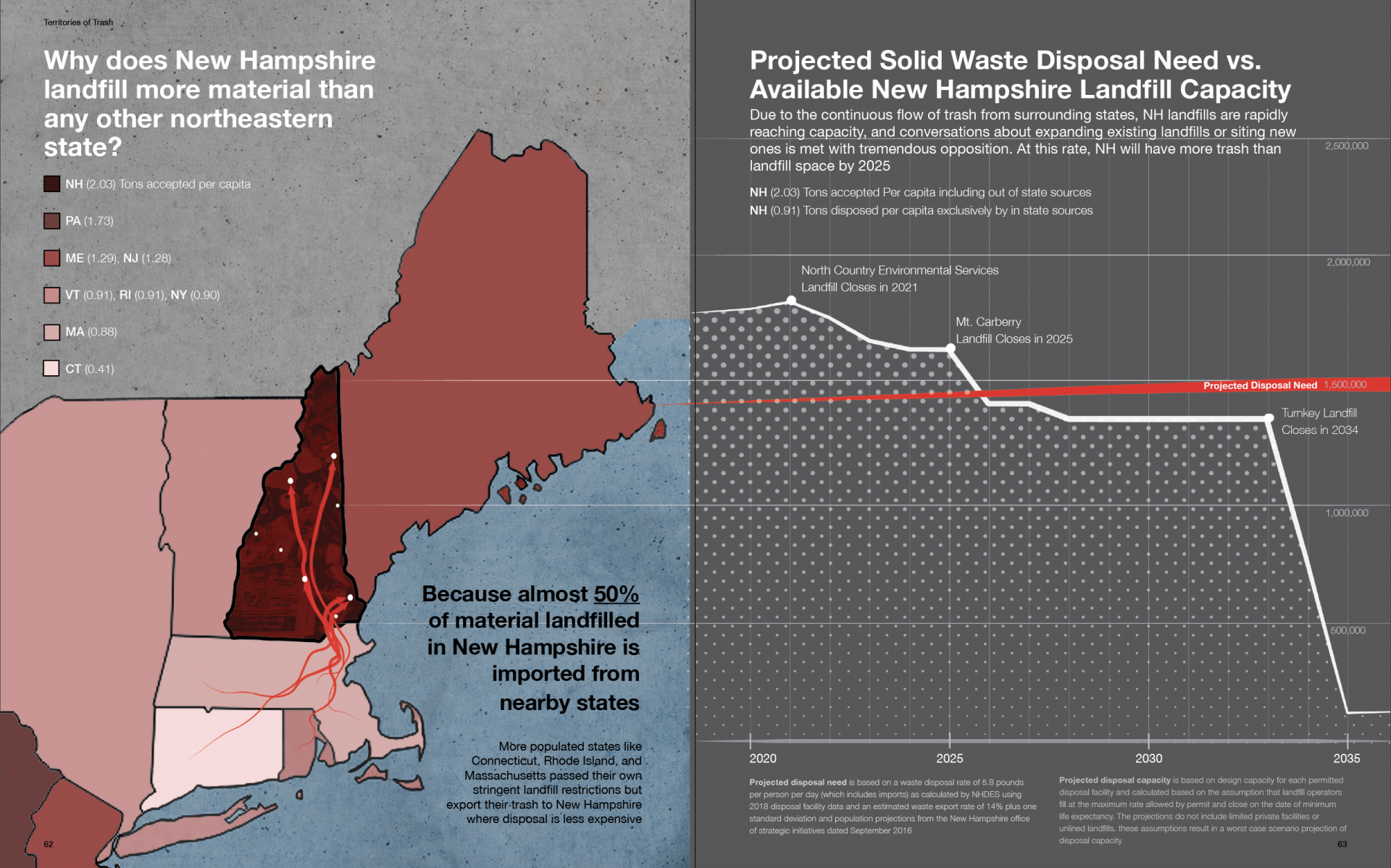
Image
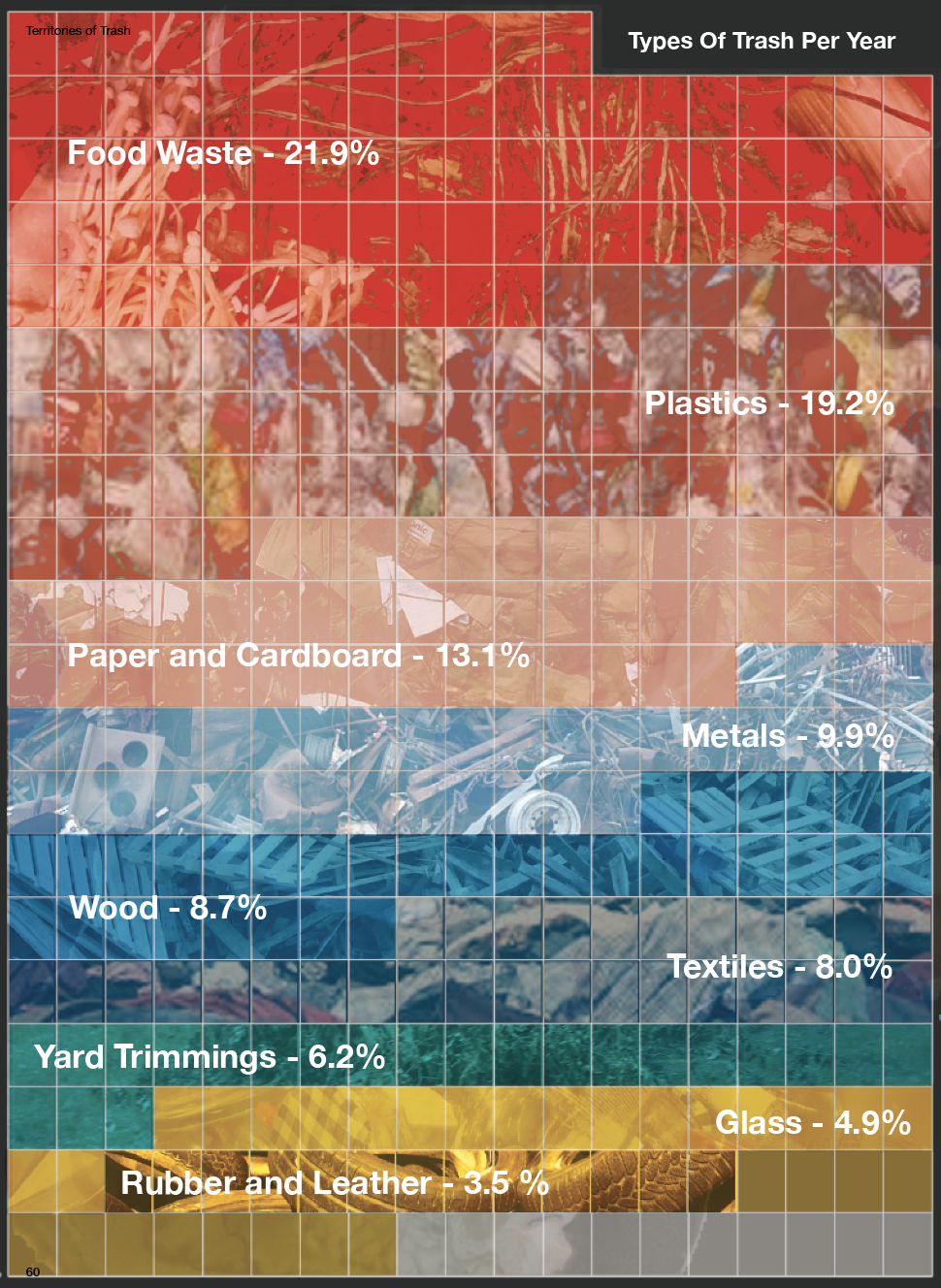
Types of Waste in Concord
By separating out food waste, The city of Concord, NH could divert 21 percent of material from landfills. Food waste can be readily converted into usable soil additives through composting, and renewable energy through anaerobic digesting.
Mary has spent most of her adult life in New England, taking long walks identifying birds and plants in the woods of Connecticut with her architect mother and fishing in Long Island Sound with her engineer father. After a brief stint in the world of environmental compliance, monitoring groundwater outside of landfills, Mary realized she craved the opportunity to develop creative place-based solutions to the challenges she witnessed in her local environment. During her time at RISD, Mary developed communication and design problem-solving skills that she hopes to soon apply in the real world. She and her husband live in New Hampshire, where she has been assisting in residential landscape design-build work, hiking, cooking, enjoying the local craft breweries, and painting.
Mary has a BA in Environmental Studies from the University of Vermont, and an MLA from RISD as of May 2020! Big thanks to her family, faculty, and beloved classmates.